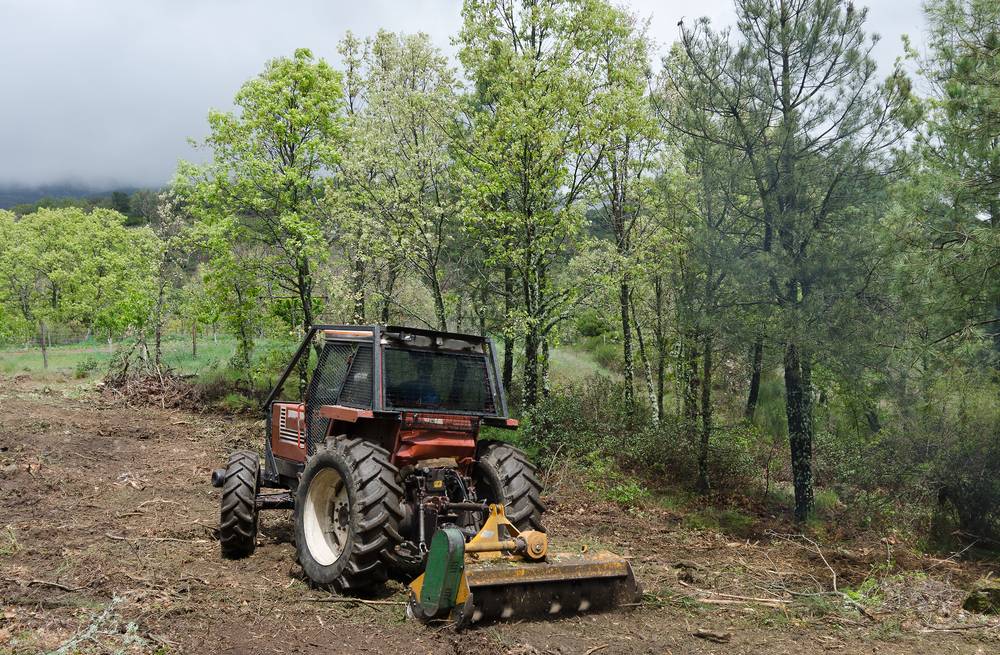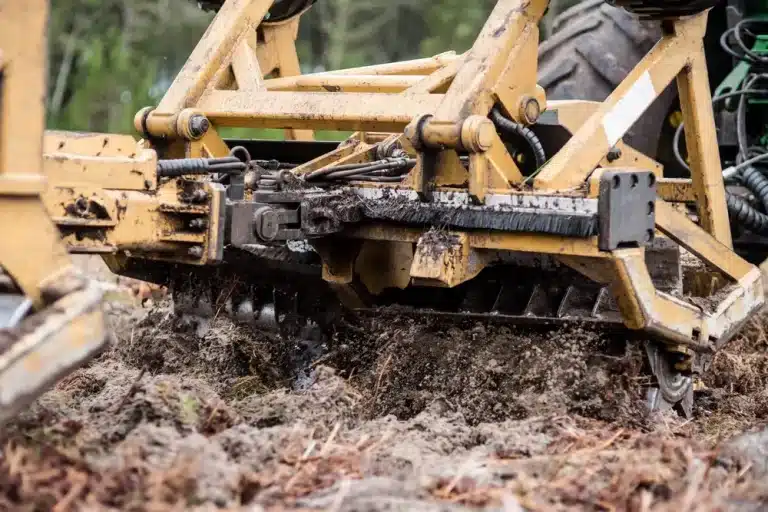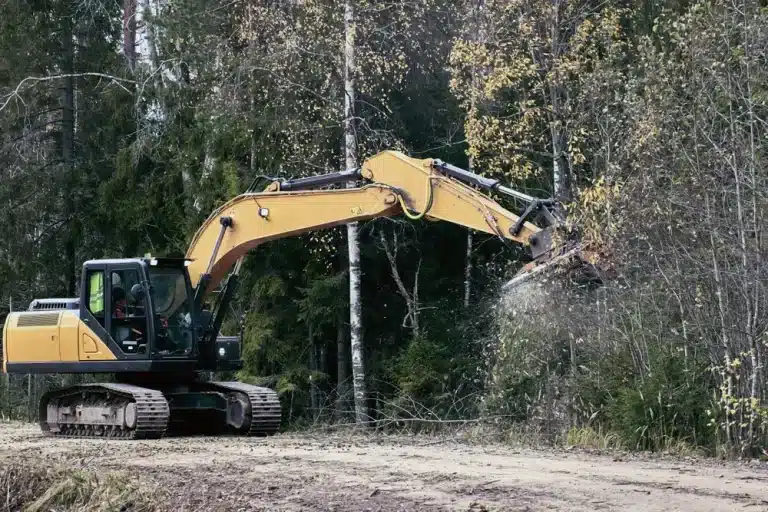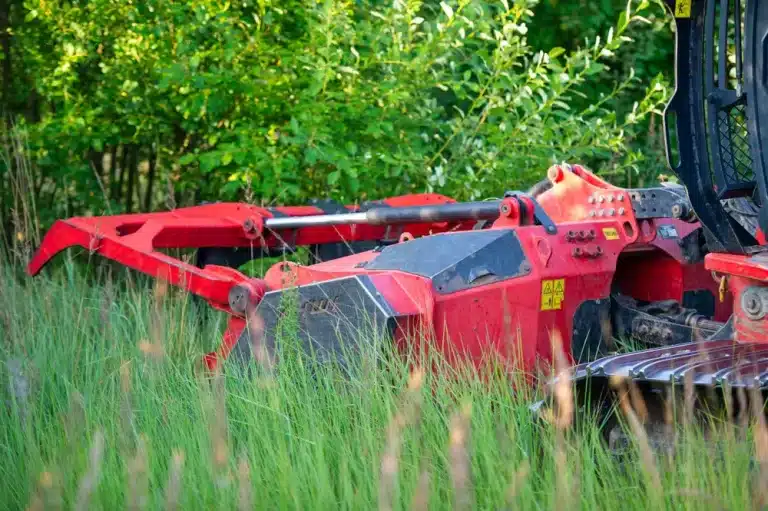Matching a mulcher to your machine is not just about size or power. It is about ensuring the entire system works together efficiently in your terrain and for your task. A good match means faster work, less fuel, fewer repairs and more safety on the ground. This guide helps you understand the key factors when selecting a forestry mulcher, whether for a skid steer, spider machine or excavator.
Machine type and carrier compatibility
Each mulcher is engineered for a specific class of carriers. Mounting the wrong head on the wrong machine can reduce efficiency, cause hydraulic stress or lead to mechanical failure. Knowing your machine’s limits is the first step to choosing the right tool.
Understanding machine families
Excavators offer reach and torque, making them suitable for deep vegetation or sloped ground.
Skid steers are agile and quick on flat surfaces.
Spider machines combine access and stability in rugged environments. Each of these has different hydraulic needs and mounting styles.
Matching flow, pressure and weight
Your carrier’s hydraulic flow rate and pressure must align with the mulcher’s requirements. If the flow is too low, the rotor will stall. If the pressure is too high, you risk damaging the head or hoses. Weight is another key factor, as an imbalanced setup strains the arm and limits precision.
Essential compatibility metrics to verify:
- Hydraulic flow in litres per minute
- Pressure capacity in bars or PSI
- Machine weight and lift capacity
- Mounting plate or coupling system
- Power source (electric, diesel, PTO)
A mulcher only performs as well as the machine it’s mounted on. Compatibility is not a bonus, it’s the baseline.
Terrain conditions and vegetation type
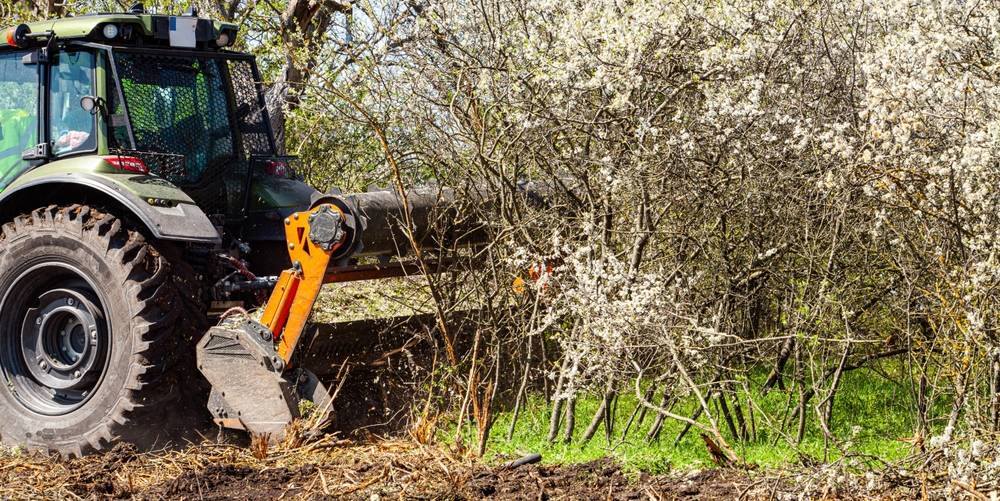
The type of terrain and the density of vegetation influence rotor choice, teeth configuration and safety needs. A mulcher that performs well in open pasture will struggle in tight forest corridors or rocky slopes.
Flat, sloped or mixed ground
On flat ground, weight distribution matters less, and high-speed rotors offer speed. On sloped or rugged land, stability and balance become critical. A spider machine with the right mulcher is often the only solution in extreme access jobs.
Vegetation thickness and cutting needs
Dense brush, hardwood saplings, vines or even soft ground cover all require different teeth patterns and cutting strategies. Picking a rotor that fits the bulk of your work is more efficient than going for a general-purpose setup.
Typical terrain and vegetation examples:
- Soft soil with low vegetation
- Rocky ground with patchy regrowth
- Sloped zone with mixed vegetation
- Dense forests undergrowth
- Fire-prone areas needing regular clearing
Read our use cases section to explore real examples of field conditions.
Productivity, speed and maintenance
Choosing the right mulcher also means choosing the right pace for your workflow. A faster rotor with frequent clogging is worse than a slower one that runs all day without stopping. Think in terms of long-term output, not just cutting speed.
Performance beyond cutting
A good mulcher minimizes downtime. It should resist clogging, tolerate impacts and allow easy maintenance. Accessibility to blades and belts, and time to change teeth, are major productivity factors.
When speed meets reliability
Some carriers are designed for short sessions in tight spaces. Others are made for long days in large plots. Make sure the mulcher’s specs and your machine’s range of motion align with your operating habits.
Focus on these technical points when comparing performance:
- Rotor width and surface coverage
- Type and number of cutting teeth
- Resistance to clogging in wet or sticky vegetation
- Maintenance access and tool-free servicing
- Durability of belts and bearings
You can request specific details via our request a quote form or check our article on the benefits of using a forestry mulcher for land cleaning.
Safety and visibility in operations
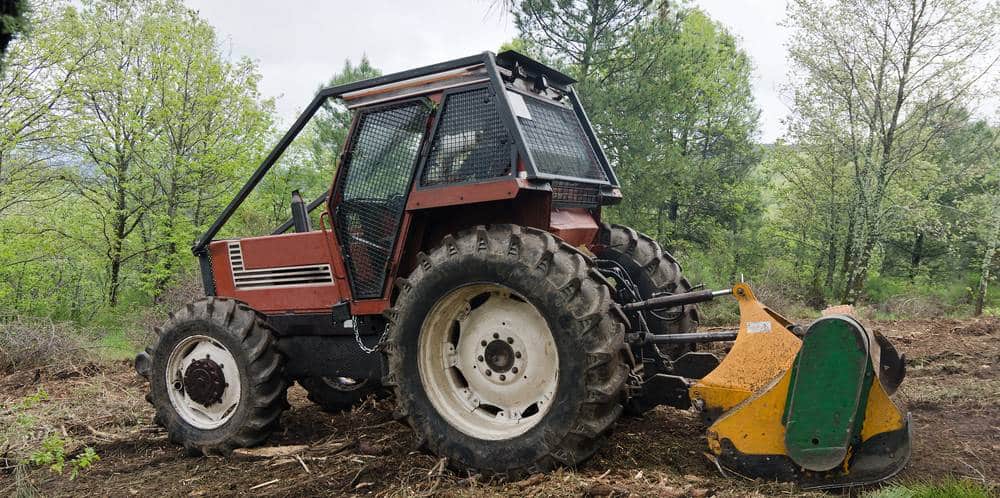
A mulcher that is too wide, too high or too heavy may block your visibility or make your movements awkward. Good field visibility is not just about comfort. It is essential for safe operation, especially near structures or drop-offs.
Cabin view and control response
On some carriers, a front-mounted mulcher offers better control. On others, a side or boom-mounted tool is safer. Consider how much of the tool you can see from your position, and how responsive the controls feel when navigating obstacles.
Operator safety comes first
The mulcher acts as a shield against flying debris, but it can also become a hazard if it is too heavy or unstable. Look for tools that allow smooth control, even on uneven ground. Features like pressure relief valves and balanced design reduce accidents.
Safety-driven design features to look for:
- Low-profile heads for better visibility
- Side protection to contain debris
- Emergency pressure valves
- Smooth rotation under stress
- Compatibility with operator protection kits
See our disaster response tools article to understand how mulchers can operate safely even in high-risk or post-crisis zones.
Budget, application and long-term use
Price alone does not define value. A more expensive mulcher that lasts ten years and increases your output pays off faster than a cheap head that needs repairs every few weeks. Always think in terms of cost per job, not just cost per item.
Think investment, not expense
Before buying, consider how often you will use the mulcher, in what kind of projects, and whether your current machine will remain part of your fleet. If your work type changes seasonally, choose a versatile head.
Different jobs, different priorities
For trail opening, light and fast is best. For clearing after storms or fires, power and robustness matter more. In farming or public works, it is often a balance between speed and clean finish.
Use this checklist to assess long-term value:
- Purchase cost versus expected working hours
- Resale or rental potential if your fleet changes
- Spare parts cost and replacement frequency
- Fit for the most frequent job type
- Adaptability to future machines
For tailored advice, you can contact us or check our article on what is the difference between a mulcher and a chipper to avoid choosing the wrong category altogether.
